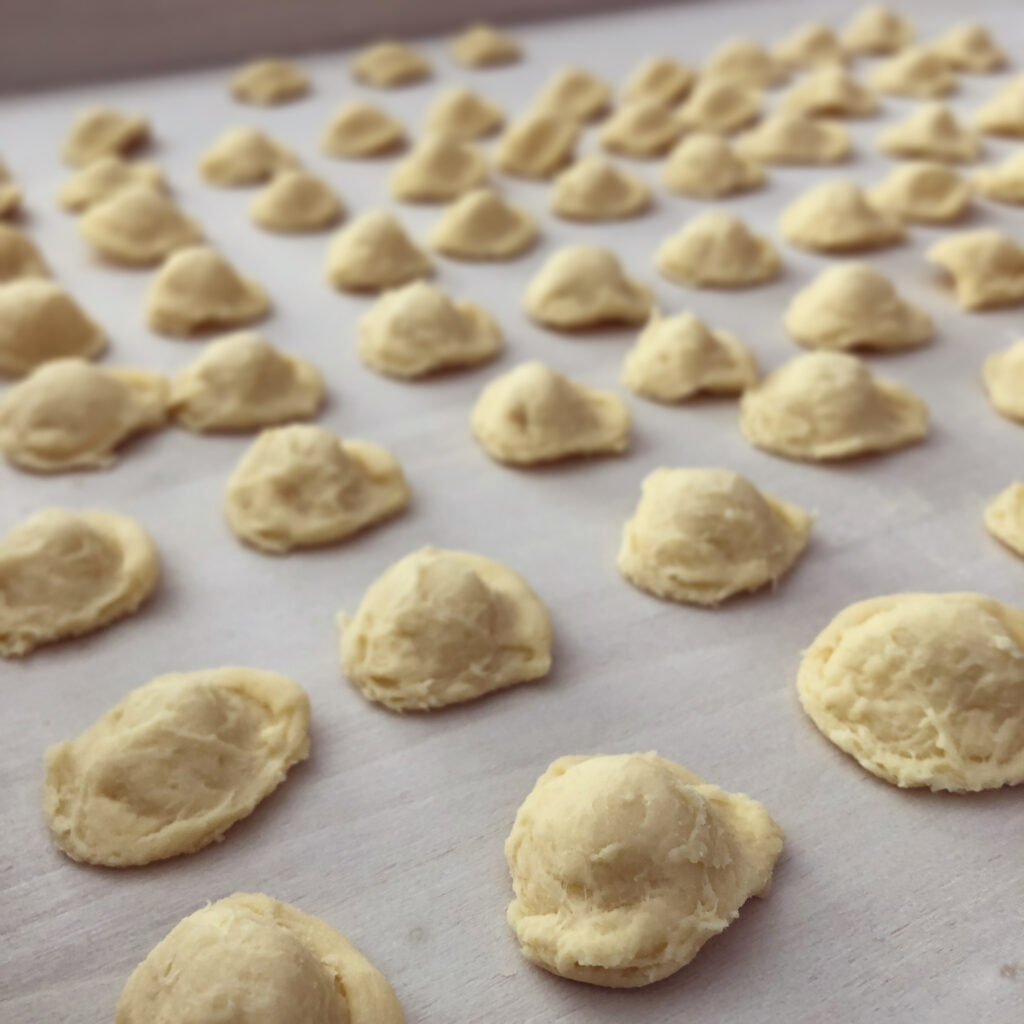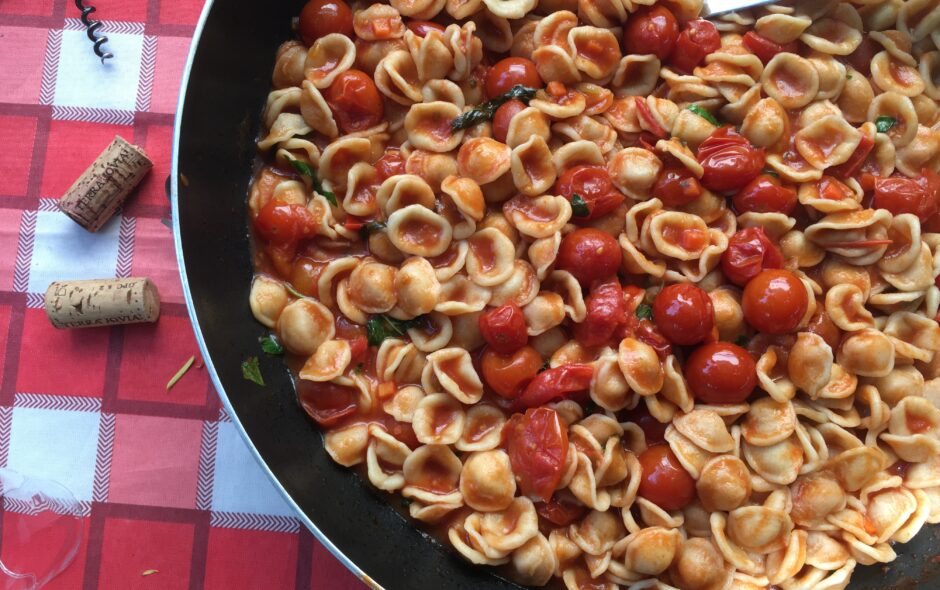Puglia’s “orecchiette” pasta, now known throughout the world, are a true symbol of the cuisine of this region. They look like small white and rough domes, with a thicker edge and a thinner centre: they really look like small ears! “Orecchio” means ear in English.
The origin of Apulian orecchiette is still uncertain today and there are many theories on how and where they were born. The oldest would date back to the ancient Romans and would see a type of round-shaped pasta with a sunken centre, as the ancestors of orecchiette. This pasta, which Varro also talks about, was prepared with flour, water and cheese.

The second hypothesis, however, would trace the typical Apulian pasta to a French, specifically Provençal, recipe. In fact, it may have been the Angevins who brought “crosets” to Puglia, a round-shaped pasta with a hollow center that was already consumed in the Middle Ages.
Finally, a third theory sees the orecchiette descending from a traditional Jewish dessert, the Ears of Haman. In fact, between the 12th and 13th centuries, the Jewish community was strongly present in the region and especially in Trani.
Then there is the tradition that sees the shape of the roof of the trulli as the inspiration of this typical pasta shape. What is certain is that today orecchiette are a symbol of Puglia in the world and there can be no holiday in Puglia without a dish of it.
I offer my guests the opportunity to learn how to make the orecchiette in a cooking class run by a housewife still carry on the tradition of homemade pasta. Besides we can taste them in restaurants offering them in classic versions or in tasty innovative recipes. Check out our week tour of Puglia for more details.

